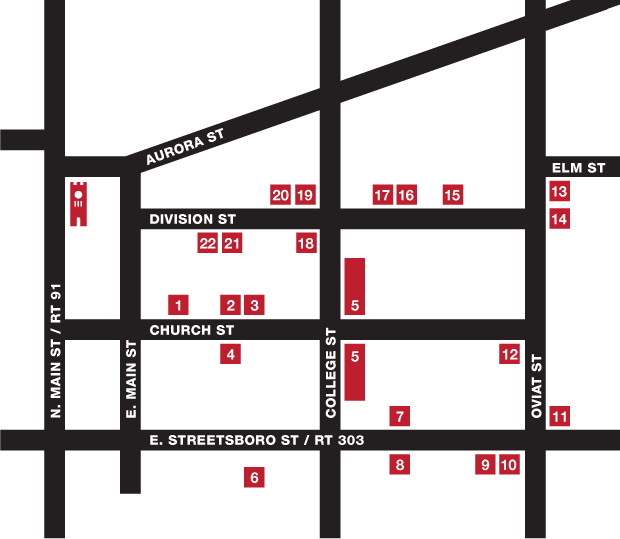Thurs, Jan 8, 7:00pm at Barlow Community Center. Former park superintendent John Debo discusses Cuyahoga Valley National Park at 50.
Tour #3: A Walking Tour of Hudson’s Historic Village Neighborhood
Approximate Walking Time: 30-40 minutes
Many of the areas and buildings on this tour of Hudson’s downtown residential neighborhood are listed in the National Register of Historic Places. Those properties with the white ”HHA” marker have been researched and authenticated by Hudson Heritage Association and may be noteworthy for their architecture, their past ownership or for the activities that took place within them. The markers typically carry the name of the original owner of the property.
This area is blessed with a range of architecture representative of the Western Reserve and other styles of significance. Be sure to note the features and elements of each building that help make Hudson such a rich reflection of its past and its citizenry – a storied group of individuals who were determined to build a community reflecting the elegance of New England in the Ohio wilderness.
Read A Brief History of Hudson
For a better mobile experience, click the map to view it in its own window, to reduce scrolling.
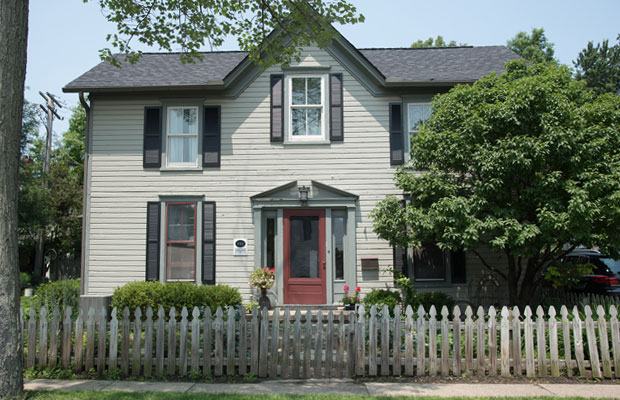 1. 23 Church Street (1877), Daniel Daney House
1. 23 Church Street (1877), Daniel Daney House
Three families occupied this small house together. Daniel Daney, a carpenter and his son and son-in-law, house painters, worked in the city.
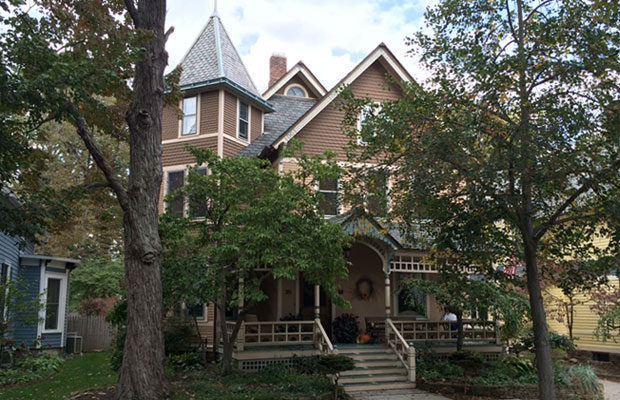 2. 35 Church Street (1890), Charles Buss House
2. 35 Church Street (1890), Charles Buss House
Said to have been the result of competition between the proprietors of two Main Street businesses. Charles Buss, a dry goods merchant, tried to build a grander house than his neighbor and rival Dennis Joyce.
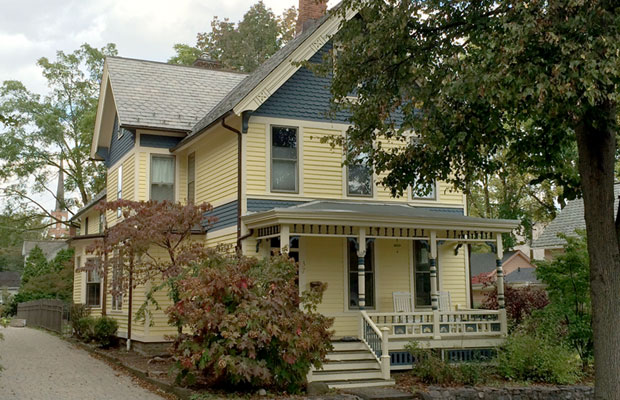 3. 37 Church Street (1889), Dennis Joyce House
3. 37 Church Street (1889), Dennis Joyce House
Grocer Dennis Joyce had already built his fashionable Queen Anne house when Charles Buss sought to outdo him. Joyce’s grocery was destroyed in the 1892 fire, but he was back in business the next day.
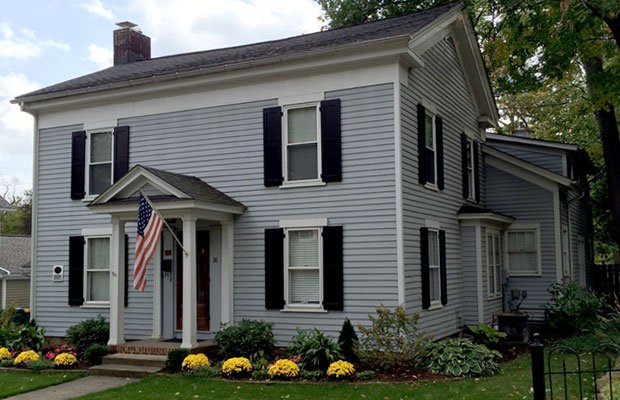 4. 38 Church Street (1853), Martin Luther Edwards House
4. 38 Church Street (1853), Martin Luther Edwards House
A carpenter by trade, Martin Edwards also kept a boarding house on Aurora Street until he sold it to a speculator during the railroad boom and built this simple late Greek Revival dwelling.
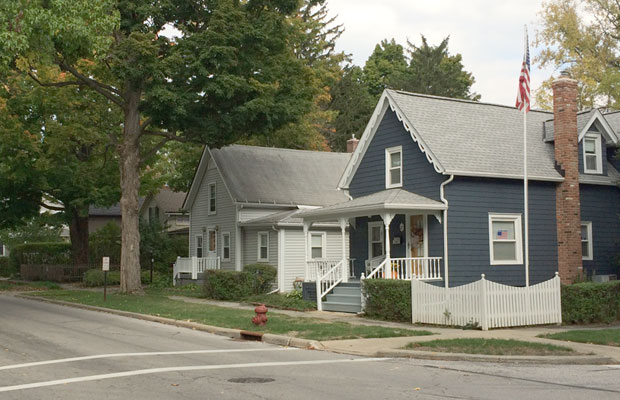 5. 7-37 College Street (1875-1882), Cheesemakers Enclave
5. 7-37 College Street (1875-1882), Cheesemakers Enclave
During the late 1870s and the early 1880s, cheese making was a prominent industry in Hudson. Seymour Straight’s cheese warehouse was at the corner of College and Aurora Streets (88 College St.) and Erastus Croy’s cheese box factory stood on the southeast corner of College and Streetsboro Streets. These nine houses, strategically placed between the two, were probably built for employees.
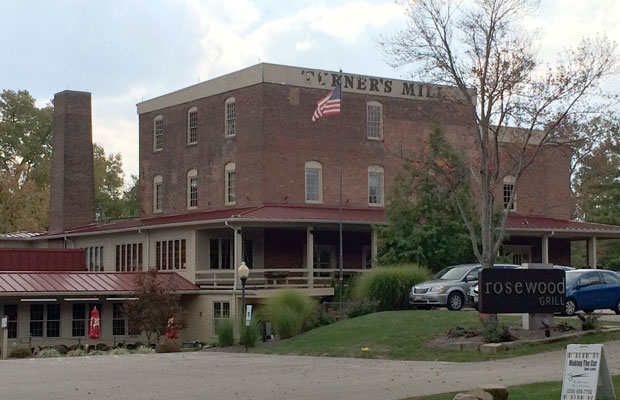 6. 36 Streetsboro Street (1854), Turner’s Mill
6. 36 Streetsboro Street (1854), Turner’s Mill
Built as a lumber mill by several members of the Clinton Line consortium in anticipation of the housing boom they believed the railroads would generate. Erastus Croy’s cheese box factory, which stood on the corner next to the mill, burned in 1890.
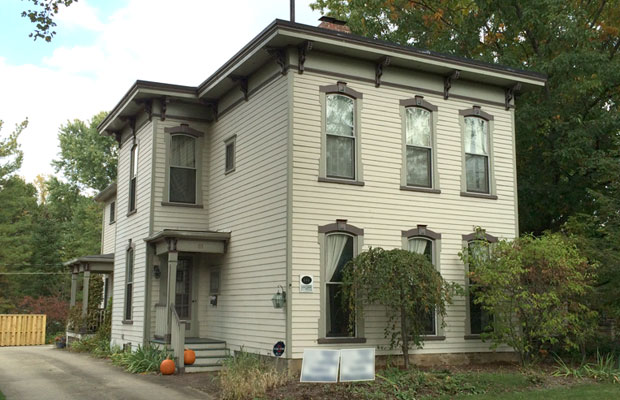 7. 65 Streetsboro Street (1878), George V. Miller House
7. 65 Streetsboro Street (1878), George V. Miller House
Main Street grocer George Miller lived here for 30 years. His was one of the businesses destroyed by the Main Street fire of 1892.
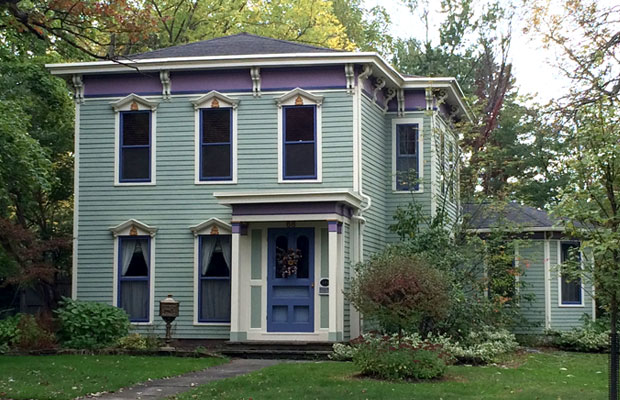 8. 66 Streetsboro Street (1869), Erastus Croy House
8. 66 Streetsboro Street (1869), Erastus Croy House
Erastus Croy built his Italianate house just a few steps from his cheese box factory across College Street.
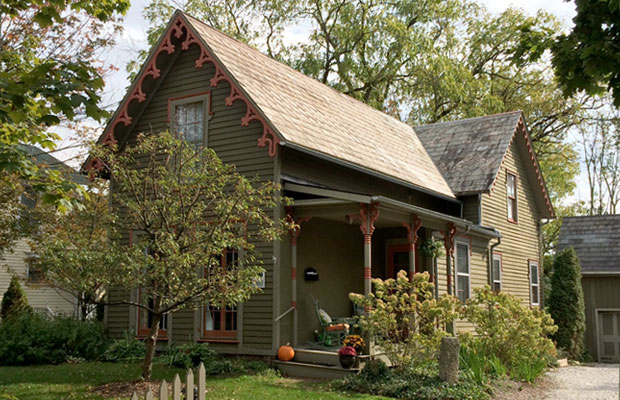 9. 92 Streetsboro Street (1852), Noah Carter House
9. 92 Streetsboro Street (1852), Noah Carter House
Noah Carter was a carpenter and builder and made sure his own house was in the most fashionable style, the Gothic Revival.
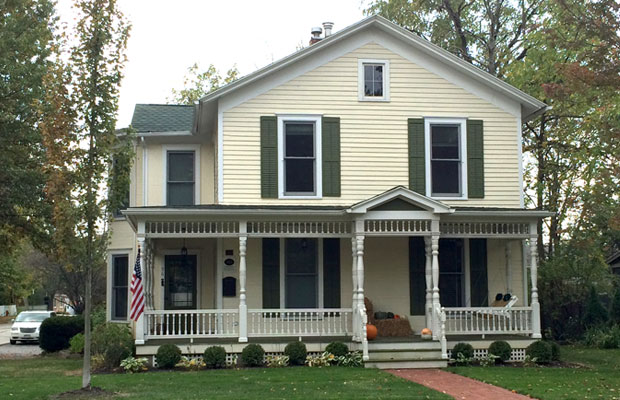 10. 96 Streetsboro Street (1844/1887), Peck-Trowbridge House
10. 96 Streetsboro Street (1844/1887), Peck-Trowbridge House
Although Herman Peck was a carpenter as well as a painter, he employed Noah Carter to build his house. The prominent front facing Streetsboro Street was added by the Trowbridge family, which bought the house in 1868 and lived here for 90 years.
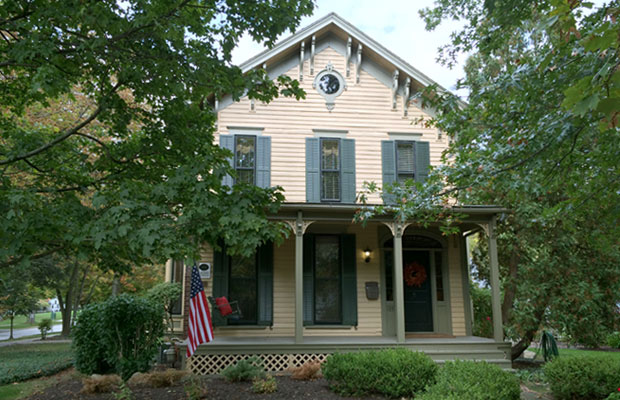 11. 105 Streetsboro Street (1876), Abi C. Brown House
11. 105 Streetsboro Street (1876), Abi C. Brown House
Abi Brown was the wife of Jeremiah Brown, half brother to John Brown. She built this house after Jeremiah’s death as a place to raise her children. The contractor is said to have been Noah Carter.
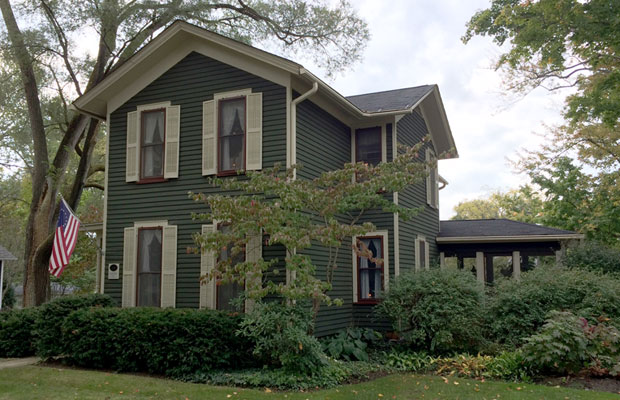 12. 20 Oviatt Street (1883), Sheldon Osborn House
12. 20 Oviatt Street (1883), Sheldon Osborn House
The son of one of several cheese box manufacturers in Hudson, Sheldon Osborn was a railroad conductor. He built this house, the first on this block, because of its proximity to the station which once stood at the foot of Oviatt Street.
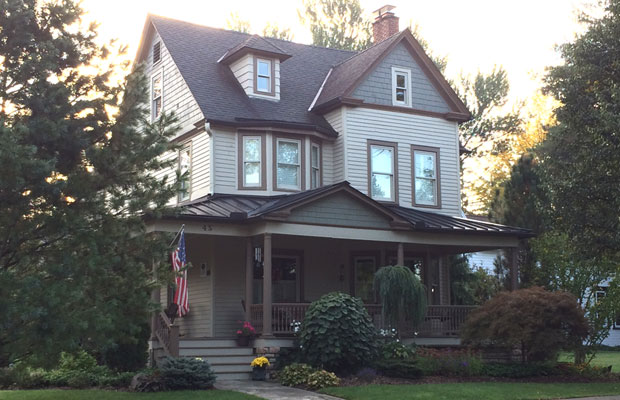 13. 45 Oviatt Street (1900), N. Seward House
13. 45 Oviatt Street (1900), N. Seward House
Frederick Seward opened a grocery on Main Street in 1899. It prospered enough that he was able to build this house the next year.
 14. 43 Oviatt Street (1878), George Church House
14. 43 Oviatt Street (1878), George Church House
George Church was a carpenter and the builder of several public buildings in Hudson. This late Gothic Revival house was his own.
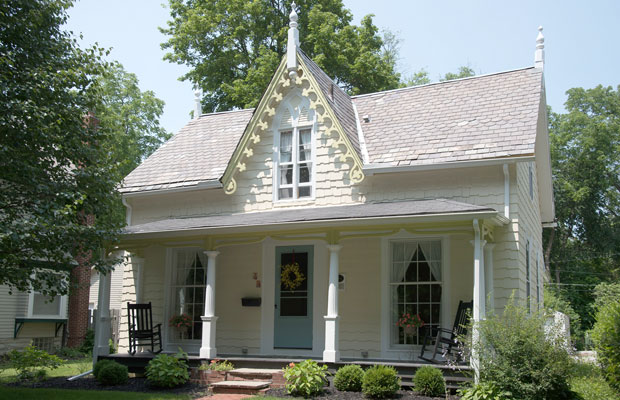 15. 73 Division Street (1853), Russell Davis / Rial Town House
15. 73 Division Street (1853), Russell Davis / Rial Town House
A Gothic Revival gem on its exterior, the interior of this cottage has classic Greek Revival trim and moldings. It was moved from South Main Street in the 20th century.
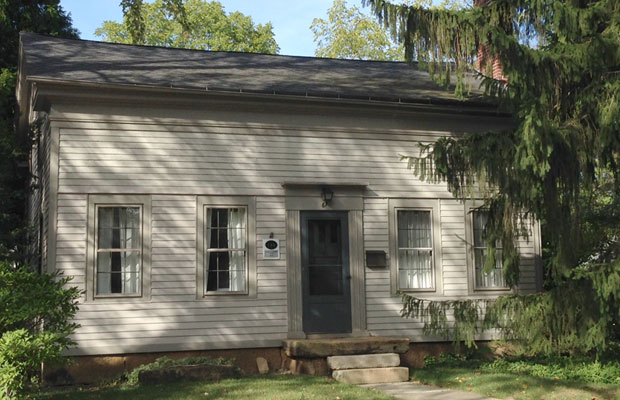 16. 67 Division Street (1852), Hunter-Cartwright House
16. 67 Division Street (1852), Hunter-Cartwright House
One of three late Greek Revival houses built on this street during the railroad boom.
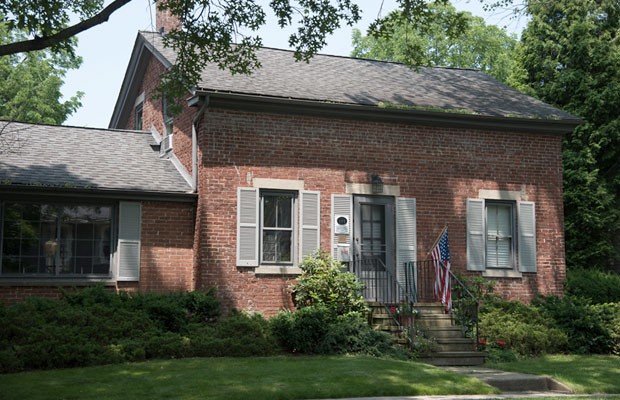 17. 63 Division Street (1852), Frederick Baldwin Tenant House
17. 63 Division Street (1852), Frederick Baldwin Tenant House
Frederick Baldwin built this as an income property during the railroad boom. His own house was on the Green at Aurora Street.
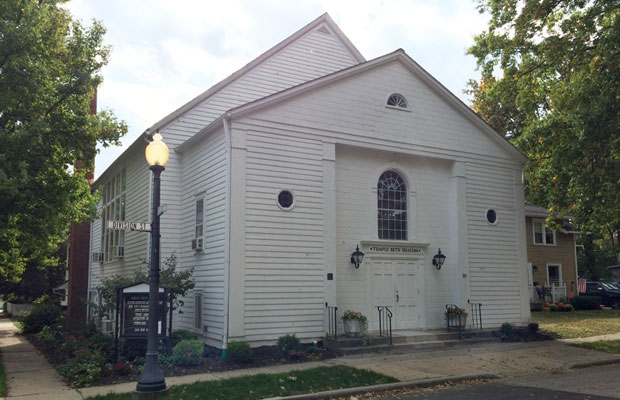 18. 50 Division Street (1860/1950), First Christian Church
18. 50 Division Street (1860/1950), First Christian Church
The denomination formerly known as Disciples of Christ was founded under the leadership of the fiery Irish preacher Thomas Campbell, who came to America in the early 19th The denomination’s ecumenical beliefs took hold in Western Reserve and a “Campbellite” college was founded in Hiram, Ohio, as well as many churches. James A Garfield, a Campbellite, president of Hiram College and later 20th President of the United States, often spoke here. The building was remodeled in the 1950s and served as the home of the Western Reserve Christian Church. In 2005, the building became the home of Temple Beth Shalom.
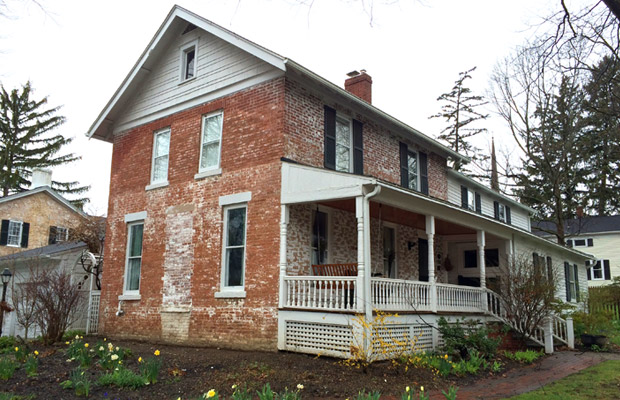 19. 48 College Street (1843), Brewster-Farrar House
19. 48 College Street (1843), Brewster-Farrar House
Anson A. Brewster lived in this house while waiting for his Aurora Street mansion to be built. His apprentice Charles Farrar later bought it from him. The wing was built soon after the brick core was completed.
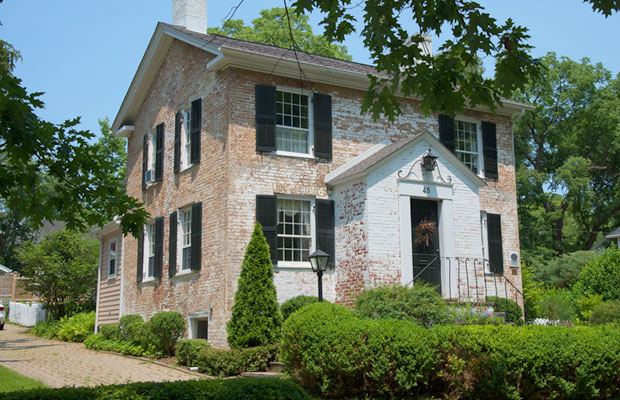 20. 45 Division Street (1844), Farrar-Trumbull House
20. 45 Division Street (1844), Farrar-Trumbull House
This house was built by Main Street tinsmith John Nutting Farrar on land leased from Western Reserve College. The Trumbull family later lived here for 65 years.
 21. 34 Division Street (1853), Julia Wells House
21. 34 Division Street (1853), Julia Wells House
Thought to have been moved to this site from Church Street, when grocer Dennis Joyce replaced it with his grand new house.
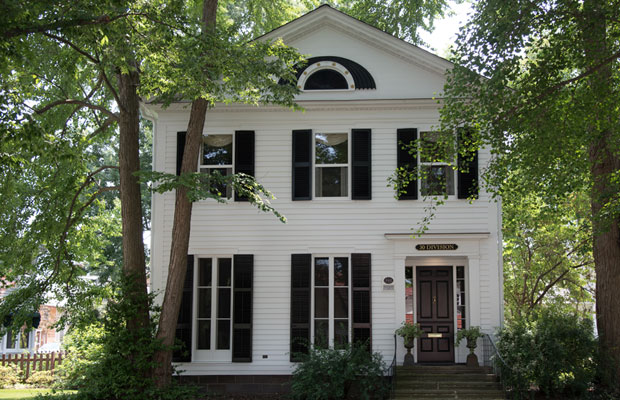 22. 30 Division Street (1826), Norman C. Baldwin House
22. 30 Division Street (1826), Norman C. Baldwin House
Three sons of Stephen Baldwin, one of Hudson Township’s original owners, came to the Western Reserve to settle on their father’s claim and became prominent citizens. Norman, Frederick and Augustus all built elegant houses facing the town green. Harvey married the daughter of the town’s founder and lived in the David Hudson house. This house, owned by Norman Baldwin, was moved to Division Street when A.W. Lockhart built his house on the Village Green site. It was later owned by William Dawes, an Abolition leader, and by Edgar B. Ellsworth, whose store was on the corner of Division and East Main. Hudson’s benefactor James W. Ellsworth was probably born here. Both Augustus and Norman commissioned noted architect Lemuel Porter to build their houses.
